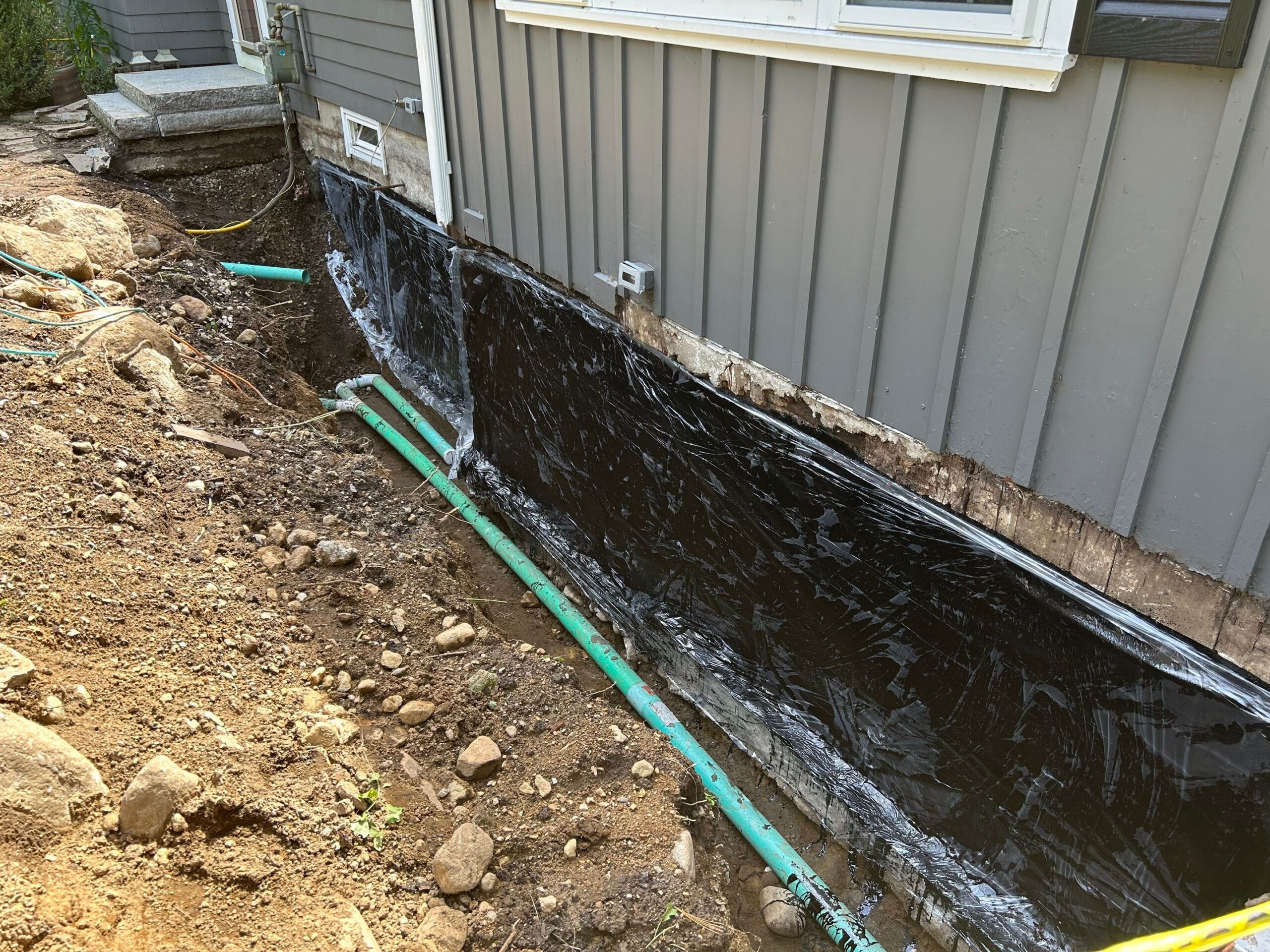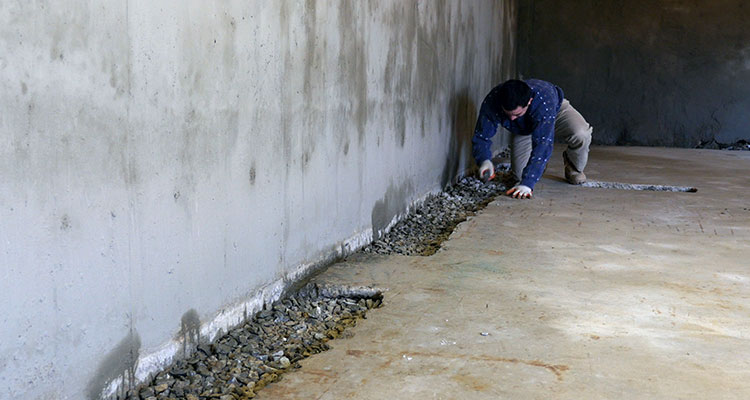Long-Term Water Solutions That Actually Work: No More Temporary Fixes
Exploring the Different Methods of Cellar Waterproofing and Their Advantages
Basement waterproofing is necessary for maintaining a completely dry and secure setting. Various approaches exist, each with distinct advantages. Inside sealers protect against dampness intrusion, while exterior systems address water drainage concerns. Sump pumps and French drains handle water properly, and dehumidifiers control humidity levels. Comprehending these options can assist homeowners make informed decisions. The appropriate solution frequently depends on particular scenarios and requirements. What aspects should one take into consideration when picking the best technique?
Inside Sealants: A Reliable Obstacle Against Wetness
Interior sealants function as an important line of defense against moisture intrusion in cellars. These products are developed to produce a water resistant barrier on floorings and walls, effectively avoiding water from seeping in. Readily available in numerous forms, consisting of sealants, paints, and coverings, they can fill up cracks and pores in concrete, guaranteeing an extra safe and secure environment.The application process generally involves cleaning up the surfaces to get rid of dust and debris, followed by the mindful application of the sealant. Once treated, these products boost the toughness of the basement while lowering moisture levels, which can bring about mold development and structural damage.Moreover, indoor sealants are often simple to apply and can be an economical service for homeowners aiming to alleviate wetness concerns. By supplying a reliable layer of defense, they play an important duty in protecting the cellar space, maintaining both its stability and functionality.
Outside Waterproofing Systems: Securing Your Foundation
Exterior waterproofing systems supply a durable option when property owners seek to shield their structures from water damages. These systems commonly entail applying waterproof membrane layers and drain systems to the exterior wall surfaces of a basement. By creating an obstacle versus groundwater, they successfully stop moisture from passing through the foundation (Water Solutions Omaha).One remarkable benefit of exterior waterproofing is its capacity to deal with the source of water breach before it gets to the interior. This aggressive method not just safeguards architectural integrity yet likewise enhances the durability of the home.Moreover, outside systems can boost the overall drain around the structure, decreasing hydrostatic stress. This reduces the opportunity of cracks and heaving that can arise from water buildup. As a result, home owners can take pleasure in a dry, steady cellar environment, significantly boosting property value and convenience. Inevitably, outside waterproofing systems are a crucial financial investment in keeping a healthy home foundation
Sump Pumps: Handling Water Build-up Successfully
Sump pumps play an important function in managing water build-up in cellars, providing an effective option for homes vulnerable to flooding or excess moisture. These gadgets are set up in sump pits, commonly situated at the lowest factor of a basement, where they collect water that leaks in from the surrounding soil. When the water level climbs, the sump pump turns on, efficiently pumping out the excess water to a marked water drainage location, consequently stopping prospective damages to the structure and indoor spaces.There are 2 primary kinds of sump pumps: completely submersible and stand. Completely submersible pumps are mounted undersea, making them less visible and commonly quieter, while stand pumps are located above the sump pit and are much easier to preserve. By successfully handling water build-up, sump pumps not only safeguard against structural damage yet additionally add to a healthier living environment by reducing moisture levels and avoiding mold growth.
French Drains: Redirecting Water Far From Your Home

Dehumidifiers: Minimizing Moisture Degrees for a Drier Environment
Cellar waterproofing includes different techniques, and dehumidifiers play a considerable role in maintaining a completely dry setting. By efficiently lowering humidity degrees, dehumidifiers assist prevent wetness accumulation, which can bring about mold development, structural damage, and undesirable odors. These gadgets work by removing excess wetness from the air, developing a much healthier and a lot more comfortable space.In addition to enhancing air top quality, dehumidifiers can improve the effectiveness of various other waterproofing methods, such as securing and water drainage systems. They assist keep optimal moisture levels, commonly between 30% and 50%, which is crucial for stopping condensation on wall surfaces and floors.Moreover, contemporary dehumidifiers are energy-efficient and included attributes like programmable setups and automatic shut-off, making them user-friendly. In general, integrating a dehumidifier into basement waterproofing prepares supplies an essential layer of protection versus moisture-related concerns, therefore safeguarding the home's stability.
Regularly Asked Inquiries

For How Long Do Waterproofing Solutions Typically Last?
Waterproofing services normally last in between 5 click reference to two decades, relying on the method used, quality of materials, and environmental conditions. Normal upkeep and evaluations can assist expand their performance and overall life expectancy.
Can I Water Resistant My Basement Myself?
The private taken into consideration whether to water-proof the cellar individually. They discovered that while do it yourself options exist, understanding of materials and techniques is important to ensure efficiency, and professional assistance might supply much better long-lasting results.
What Are the Indicators of Cellar Wetness Issues?
Signs of basement dampness problems include noticeable water discolorations on walls, moldy smells, peeling off paint, mold growth, and dampness on floorings. High humidity levels might also indicate underlying wetness problems calling for interest to avoid further damages.
Just How Much Does Cellar Waterproofing Expense?
The cost of cellar waterproofing differs commonly, normally ranging from $1,500 my site to $5,000. Factors affecting costs include the severity of dampness problems, the chosen technique, and the geographical place of the home.
Will Waterproofing Boost My Home's Value?
The concern of whether waterproofing increases a home's worth typically occurs amongst property owners. Typically, effective waterproofing can boost home charm, reduce damages risks, and potentially bring about higher resale costs, relying on the local genuine estate market. By developing a barrier against groundwater, they properly avoid wetness from passing through the foundation.One noteworthy advantage of outside waterproofing is its capacity to address the source of water invasion prior to it gets to the interior. Sump pumps play an essential role in handling water buildup in cellars, providing an effective option for homes vulnerable to flooding or excess dampness. When the water degree rises, the sump pump turns on, efficiently pumping out the excess water to a designated drain area, therefore protecting against potential damage to the foundation and interior spaces.There are two primary types of sump pumps: submersible and stand. Water Solutions. By guiding groundwater and surface water away from the foundation, French drains pipes help prevent water buildup in basements and crawl rooms, decreasing the danger of structural damage and mold and mildew growth.Installation generally takes place around the boundary of the home, making certain that water is efficiently drawn away. Indications of basement moisture concerns consist of visible water stains on walls, moldy odors, peeling off paint, mold growth, and wetness on floorings